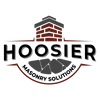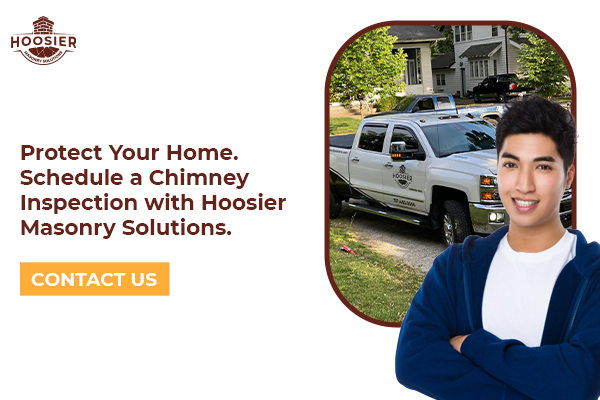During the thick of winter, it is imperative to ensure that your chimney is in optimal condition to withstand the harsh weather conditions. Proper chimney maintenance is not only crucial for the efficient functioning of your fireplace or stove, but it also plays a significant role in ensuring the safety of your home.
From understanding the anatomy of your chimney to addressing common winter-related issues, this discussion will provide you with valuable tips and insights that will help you navigate through the cold season with confidence.
So, whether you’re a seasoned homeowner or a first-time chimney owner, read on to discover the essential chimney maintenance tips that will help you protect your investment and keep your home warm and cozy throughout the winter months.
Understanding Your Chimney’s Anatomy
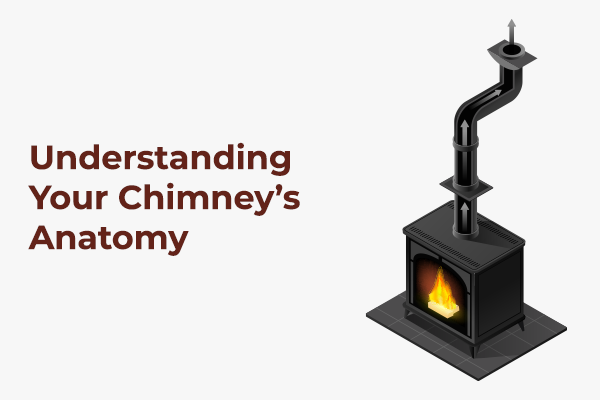
Understanding your chimney’s anatomy is crucial for proper maintenance and care.
To start, it is important to familiarize yourself with the basic structure of a chimney, which includes the chimney crown, flue liner, smoke chamber, and damper.
Additionally, knowing the key components of a chimney, such as the chimney cap, flashing, and mortar joints, will help you identify and address common chimney issues like water leaks and structural damage.
Chimney Structure Basics
The chimney structure is a crucial component of your fireplace system, responsible for safely venting smoke and gases out of your home. Understanding the basics of chimney structure is essential for chimney safety, maintenance, and proper functioning.
Chimneys are typically constructed using bricks, stones, or metal. These elements include several important parts, including the chimney crown, chimney cap, flue liner, smoke chamber, and damper.
Proper chimney ventilation is vital to prevent the buildup of dangerous gases, such as carbon monoxide, inside your home. Regular chimney maintenance, including cleaning and inspections, is necessary to ensure the structure is in good condition and free from any blockages or damage.
Additionally, chimney waterproofing is crucial to prevent water penetration, which can lead to deterioration and costly repairs.
Key Chimney Components
Chimney components play a crucial role in the proper functioning and safety of your fireplace system. Understanding the anatomy of your chimney is essential for identifying and addressing common chimney issues. When it comes to the key chimney components, there are several important parts that you need to be familiar with.
The chimney structure basics include the chimney crown, which acts as a protective covering for the top of the chimney, preventing water damage and keeping out debris. The chimney cap, on the other hand, is installed at the top of the flue and serves as a barrier against rain, snow, and animals. The chimney liner, often made of clay or metal, protects the masonry from the corrosive byproducts of combustion.
It is crucial to examine these key chimney components for any signs of damage or deterioration. By understanding the chimney anatomy and addressing any issues promptly, you can ensure the safety and functionality of your fireplace system during the harsh winter conditions.
Common Chimney Issues
Understanding the intricate anatomy of your chimney is essential for fully comprehending its complexities and addressing common issues.
Common chimney problems can range from minor issues to more serious repairs. One of the most common issues is a chimney leak, which can lead to water damage and deterioration of the chimney structure.
Another common problem is creosote buildup, which can cause chimney fires if not removed regularly. Additionally, blockages in the chimney, such as bird nests or debris, can hinder proper airflow and ventilation.
To prevent these issues, regular chimney maintenance is crucial. This includes annual inspections, cleaning, and following chimney safety measures to ensure the longevity and optimal performance of your chimney.
Winter Inspection Checklist

During winter weather, it is essential to conduct a thorough inspection of your chimney to ensure its structural integrity.
This inspection should include checking for any obstructions, such as nests or debris, that could hinder proper airflow.
Additionally, it is crucial to assess the cleanliness of the chimney and implement safety measures to prevent potential hazards during the winter season.
Hoosier Masonry Solutions can conduct an inspection any time during the winter so you can be at peace with using your fireplace and keeping your home safe.
Chimney Structural Integrity
Ensuring the structural integrity of your chimney is imperative before the winter season begins, as it is essential for the safety and functionality of your fireplace.
Chimney maintenance is crucial to protect your chimney from winter weathering and to maintain its structural stability. Harsh winter conditions can cause significant damage to your chimney, such as cracks, loose bricks, or damaged mortar joints.
To prevent winter damage, it is essential to inspect your chimney thoroughly. Look for any signs of wear and tear, such as crumbling bricks or missing mortar. Ensure that the chimney cap is in good condition to prevent moisture from entering the chimney.
Cold weather care includes cleaning out any debris or blockages and ensuring proper ventilation. By taking these measures, you can maintain the structural integrity of your chimney and enjoy a safe and warm fireplace during the winter season.
Checking for Obstructions
During the pre-winter inspection checklist, it is crucial to thoroughly check for any obstructions in your chimney to ensure the safety and efficiency of your fireplace.
Obstruction prevention is essential as chimney blockages can lead to smoke filling up your living space, fire hazards, and even carbon monoxide poisoning.
Winter debris, such as leaves, twigs, and animal nests, can accumulate in the chimney, obstructing the airflow. A thorough chimney inspection is necessary to identify any blockages.
It is important to clear pathways for the smoke and gases to escape freely. Use a flashlight and mirror to inspect the chimney from various angles, and if any blockages are detected, they should be promptly removed.
Regularly checking for obstructions will help maintain the proper functioning of your chimney and keep your home safe during the winter months.
Cleanliness and Safety Measures
To ensure the cleanliness and safety of your chimney, it is imperative to conduct a thorough pre-winter inspection checklist. Regular cleaning and maintenance are essential to prevent creosote buildup, which can lead to chimney fires.
It is recommended to clean your chimney at least once a year. When performing the inspection, make sure to have the proper equipment, such as a flashlight, gloves, and a mirror, to thoroughly examine the chimney from all angles.
Start by removing any debris, such as leaves or animal nests that may have accumulated in the chimney. Check for any cracks or damage to the chimney structure and ensure the chimney cap is securely in place.
Essential Chimney Cleaning Techniques

When it comes to chimney cleaning, selecting the proper tools is essential. Using a chimney brush that is the right size and shape for your chimney will ensure effective cleaning.
In addition, knowing the different soot removal methods, such as using a vacuum or a chemical cleaner, can help you achieve a thorough cleaning.
Lastly, it is important to prioritize safety during the cleaning process by wearing protective gear and taking precautions to prevent accidents or fires.
Selecting Proper Cleaning Tools
Proper selection of cleaning tools is crucial for effective chimney maintenance and ensuring optimal performance. When it comes to chimney cleaning, having the right tools can make all the difference.
The first essential tool is a chimney brush. These brushes come in various sizes and materials, such as polypropylene or steel, and are designed to remove soot, creosote, and other debris from the chimney walls. It is important to choose a brush that matches the size and shape of your chimney flue for maximum efficiency.
Investing in proper safety gear is essential. This includes gloves, goggles, and a dust mask to protect yourself from harmful particles and fumes.
Lastly, having the right cleaning equipment and maintenance supplies, such as a sturdy ladder and a drop cloth, will ensure you can clean your chimney effectively and with minimal mess.
Effective Soot Removal Methods
A crucial aspect of effective chimney maintenance and ensuring optimal performance is employing efficient methods for removing soot, which is an essential technique in chimney cleaning. Soot buildup is a common problem during winter, as the burning of wood or coal produces this black, powdery substance that can accumulate inside the chimney.
Various techniques can be employed to effectively remove soot. One popular method is using a chimney brush, which is specifically designed to scrub away the soot from the interior walls of the chimney. Another effective technique is using chemical cleaners that break down the soot and make it easier to remove. However, when employing these soot removal techniques, it is important to prioritize cleaning safety measures to avoid accidents or damage to the chimney.
Additionally, regular soot removal is crucial in preventing winter chimney problems, such as chimney frost. By removing the soot, the risk of condensation and subsequent frost formation is minimized, ensuring the chimney functions optimally throughout the winter season.
Safety Precautions During Cleaning
To ensure a safe and effective chimney cleaning process, it is imperative to follow essential safety precautions.
First and foremost, it is crucial to have the right cleaning equipment. This includes a chimney brush, rods, and a vacuum cleaner specifically designed for chimney cleaning.
When using a ladder to access the chimney, ladder safety is paramount. Ensure the ladder is stable and properly positioned, and always have someone present to assist.
Protective clothing such as gloves, goggles, and a dust mask should be worn to prevent exposure to soot and other harmful particles.
Adequate ventilation precautions must be taken to minimize the risk of inhaling toxic fumes. Additionally, it is highly recommended to have a fire extinguisher nearby in case of emergencies.
Addressing Common Winter Chimney Problems
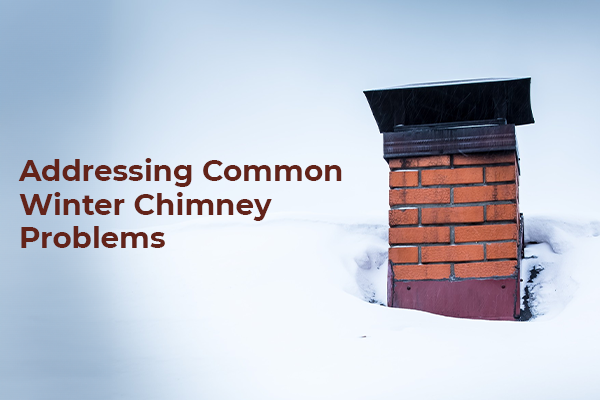
Winter can bring about a range of issues for chimneys, which can lead to potential damage and safety hazards. It is important for homeowners to be able to identify common winter chimney problems such as excessive condensation, chimney frost, and cracks in the masonry. By understanding these issues, steps can be taken to prevent further damage and ensure the chimney is in proper working condition.
Regular maintenance, including cleaning and inspections, along with necessary repairs, can help address these problems and keep the chimney functioning safely,
Identifying Winter Chimney Issues
During the colder months, homeowners may encounter a range of common issues related to their chimneys, necessitating prompt identification and resolution.
Winter chimney maintenance is crucial to ensure the proper functioning of the chimney during freezing temperatures. One common problem is snow and ice buildup in chimneys. This can lead to blockages and restrict the flow of smoke and gases, posing a risk of carbon monoxide poisoning.
Another issue is wind damage to chimneys in winter. Strong gusts can cause structural damage, such as loose bricks or chimney caps, which can allow moisture to enter and cause further deterioration.
Additionally, chimney flue blockage in cold weather is a serious concern. Creosote buildup, bird nests, or debris can obstruct the flue and prevent proper ventilation, leading to poor draft and potential smoke backflow.
Regular inspections and maintenance can help identify and address these winter chimney issues promptly.
Preventing Chimney Frost Damage
Chimney frost damage is a common issue that homeowners face during winter, requiring proactive measures to prevent potential problems. Winter chimney maintenance is crucial in protecting the chimney from frost and ensuring its longevity.
To prevent frost damage, it is important to implement frost prevention techniques and practice proper winter chimney care. One effective technique is to install a chimney cap or cover to prevent moisture from entering the chimney. Additionally, sealing any cracks or gaps in the chimney structure can help prevent water infiltration and subsequent frost damage.
Regular inspections and cleanings by a professional chimney sweep are also essential to identify and address any potential issues before they escalate. By taking these preventive measures, homeowners can protect their chimneys from frost damage and ensure safe and efficient operation throughout the winter season.
Essential Chimney Repair Tips
To ensure the longevity and proper functioning of your chimney during the winter months, it is imperative to be aware of common issues that may arise and equip yourself with essential chimney repair tips. Winter can be particularly harsh on chimneys, with freezing temperatures, heavy snowfall, and strong winds.
Therefore, it is crucial to include chimney maintenance essentials in your winter repair tips. Regularly inspecting your chimney for any signs of damage, such as cracks or loose bricks, is the first step in maintaining its integrity. Additionally, including chimney maintenance checklist items such as cleaning the chimney flue and ensuring proper ventilation will help prevent any potential issues.
When it comes to chimney repair techniques, it is essential to address any problems promptly and hire a professional if needed. By following these winter chimney care tips, you can ensure the safety and functionality of your chimney throughout the colder months.
Frequently Asked Questions
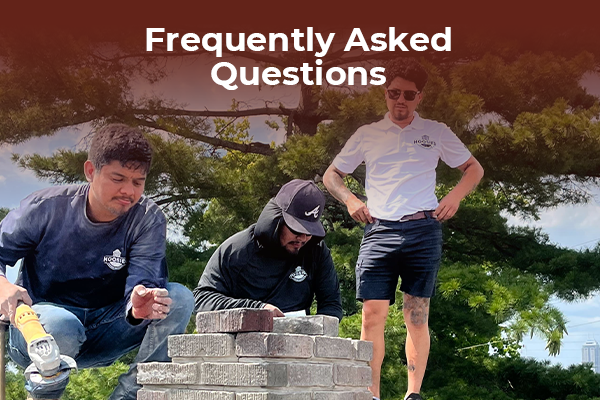
How often should I have my chimney inspected and cleaned?
The frequency of chimney inspection and cleaning depends on several factors, including usage, fuel type, and chimney condition. It is generally recommended to have a professional chimney sweep inspect and clean the chimney at least once a year to ensure safety and prevent potential hazards.
Can I use my fireplace during the winter if my chimney is not in perfect condition?
Using a fireplace during winter without a chimney in perfect condition can be dangerous. It is crucial to prioritize chimney safety and consider repair options to prevent potential hazards. Alternatively, explore alternative heating methods to ensure winter precautions are met.
What are some signs that my chimney may be damaged and in need of repairs?
Some signs that your chimney may be damaged and in need of repairs include cracks in the masonry, loose bricks or mortar, water leaks, and a strong odor of smoke inside your home. Regular chimney inspections can help prevent winter chimney damage.
How can I prevent ice and snow from causing damage to my chimney during the winter?
Preventing ice and snow damage to your chimney during the winter is crucial for avoiding winter chimney issues. Implementing proper snow protection and winter chimney care, such as regular inspections and maintenance, can help ensure the integrity and longevity of your chimney.
Schedule a Chimney Inspection This Winter
Proper chimney maintenance is crucial during harsh winter conditions to ensure the safety and efficiency of your fireplace or heating system.
Understanding the anatomy of your chimney, conducting pre-winter inspections, and implementing essential cleaning techniques can help prevent common winter chimney problems.
By following these tips, homeowners can maintain a well-functioning chimney and enjoy a warm and cozy winter season. Schedule an appointment with Hoosier Masonry Solutions for a much-needed winter inspection.
Related Content
Most Popular

